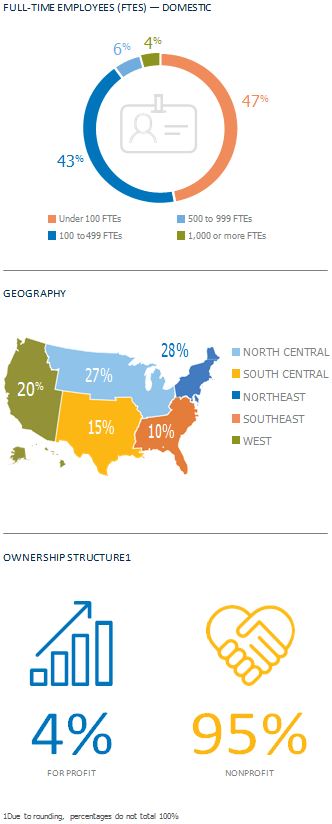Survey Overview
Gallagher’s 2018 Benefits Strategy & Benchmarking Survey asked U.S. employers close to 300 questions across the spectrum of total rewards.
 This addendum highlights key findings and implications based on responses from 255 social service employers participating in this year’s research.
This addendum highlights key findings and implications based on responses from 255 social service employers participating in this year’s research.Social service organizations provide a wide range of vital programs that drive their mission. From day to day, they’re tasked with maintaining impactful operations and generating revenue through public funding and donations. In a time of increasing financial constraints, limited federal and state contributions have made efficient resource allocation a growing priority.
While the relative financial health of these organizations may vary, the need to attract and retain a qualified staff is a shared reality. Social service employers strive to attract talent who have unwavering enthusiasm for their organization’s mission. And though recruitment and retention efforts are huge challenges themselves, it must be done while maintaining strict fiduciary standards.
As many social service employers have limited budgets for compensation, it’s critical for them to offer and ensure participation in strong benefit plans to attract and keep talent. This benchmarking report outlines strategies and tactics employers in this sector are taking to cost effectively improve employee engagement, resulting in better work.
